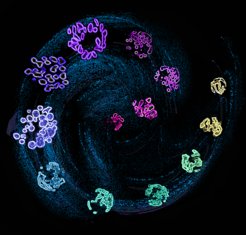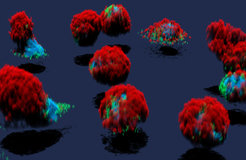Mitochondria-driven metabolic immune control on the single cell and populational level
Rambold Lab
Project

Mitochondria are key signaling nodes that can shape immune cell function by releasing ATP, ROS, mitochondrial DNA, TCA cycle intermediates, cytochrome C and more. Many of these functions are dependent on the dynamism of this organelle. Mitochondria continuously move inside cells and shape their morphology by undergoing controlled cycles of fission and fusion. In non-immune cells, we and others identified that mitochondria form hyperfused networks in response to limited nutrient availability (Rambold, PNAS 2011). This adaptive response protected mitochondria from autophagosomal degradation (Rambold, PNAS 2011), enabling them to support autophosomal biogenesis (Hailey, Rambold, Cell 2010). In addition, we found that fusion was essential to ensured proper intra-mitochondrial metabolite trafficking and respiration (Rambold, Dev Cell 2015).
These results prompted us to investigate if this mitochondrial hyperfusion is conserved in immune-cell transitions that undergo phases of ‘pseudostarvation’, e.g. the differentiation of effector to fatty acid oxidation reliant memory T cells. Morphological mapping studies revealed that effector T cells contained primarily fragmented mitochondria, whereas mitochondria in memory T cells were fused into networks. Inhibiting mitochondrial network-formation by depleting the fusion protein OPA1 resulted in cristae expansion and altered metabolic state. Most strikingly, we found that the failure to fuse mitochondria abolished the differentiation of memory T cells in vitro and in vivo (Buck, Cell 2016). As such, our data suggest mitochondrial remodeling as signaling mechanism that instructs T cell metabolic programming and function.
Side by Side comparsion of activated T cells & memory T cells
We are currently investigating how mitochondrial fusion and other communication modes control the metabolic programming in and amongst different immune cell populations.


